
Do you have a question about the Cadillac 2007 STS and is the answer not in the manual?
| Brand | Cadillac |
|---|---|
| Model | 2007 STS |
| Category | Automobile |
| Language | English |
Covers power seat adjustments, lumbar support, heated and ventilated seat features, and seatback recline.
Details on heated rear seats and the rear seat pass-through door functionality.
Explains the importance, proper usage, and precautions for safety belts for all occupants.
Guidelines for older children, infants, and young children, including restraint system types.
Details on airbag locations, function, deployment, and safety precautions.
Instructions on how to check the proper functioning of safety belts and related system parts.
Information on vehicle keys and the dangers of leaving keyless access transmitters with children.
Details on the system's operation, range, and troubleshooting tips.
Covers door lock operation, power locks, programmable automatic locks, and security locks.
Safety cautions regarding children in vehicles and details on power window operation.
Information on the vehicle's theft-deterrent alarm system, arming, and testing.
Guidelines for new vehicle break-in, ignition positions, and starting procedures.
Details on automatic dimming rearview mirrors, Intellibeam™, OnStar®, compass, and cleaning.
Overview of OnStar® services, features, and how to contact customer support.
Information on programming the system to replace garage door openers and security systems.
Customizing vehicle features like seats, mirrors, and lighting to driver preferences.
Identifies and describes the main components of the instrument panel.
Explains the function of hazard warning flashers and their operation.
Instructions for operating the power tilt and telescope steering wheel controls.
Details the functions of the turn signal and multifunction lever, including lane-change signals.
Information on the FCA system, its operation, warnings, and limitations.
Covers operation of windshield wipers, including mist, delay, and speed settings.
Explains the automatic operation of wipers based on moisture sensor and sensitivity settings.
Details on washer fluid operation, low fluid warnings, and cleaning the washer system.
Information on how to operate headlamp washers and conditions for their use.
Instructions on setting, resuming, and disengaging cruise control.
Details on the ACC system, its operation, limitations, and cautions.
Covers exterior lamp controls, automatic lighting, DRL, and Twilight Sentinel®.
Information on the dual climate control system, automatic operation, and manual controls.
Description of warning lights, gages, and indicators on the instrument panel.
Overview of the instrument panel cluster and its gauges.
Explanation of DIC functions, controls, displays, and messages.
Guide to operating the audio system, including radio, CD, and XM™ features.
Advice on driving defensively, emphasizing awareness and hazard anticipation.
Information on alcohol's effects on driving ability and the risks associated with DUI.
Explanation of vehicle control systems: brakes, steering, and accelerator.
Details on perception time, reaction time, and stopping distances.
Information on the TCS operation, limitations, and when to turn it off.
Explanation of the vehicle stability enhancement system and its activation.
Tips and safety advice for safely passing other vehicles on the road.
Discussion on skidding and how to maintain control in emergency situations.
Safety tips for driving during nighttime, including visibility and driver impairment.
Precautions and advice for driving safely in wet conditions, including hydroplaning.
Tips for safe city driving, focusing on traffic and signals.
Advice on safe freeway driving, including merging, speed, and lane usage.
Checklist for preparing your vehicle and yourself for extended journeys.
Tips for preparing your vehicle and driving safely in winter conditions.
Procedures and cautions for freeing a stuck vehicle.
Guidelines on vehicle weight limits, load capacity, and proper cargo placement.
Information on towing your vehicle, including types and important considerations.
Information on servicing your vehicle at a GM dealer and genuine GM parts.
Effects of non-GM accessories on vehicle performance, safety, and warranty.
Guidance on recommended fuel types, octane ratings, and gasoline specifications.
Instructions for checking underhood components like hood release and engine compartment.
Instructions for checking engine oil level and when to add or change oil.
Explanation of the system that indicates when to change engine oil and how to reset it.
Information on the cooling system, coolant type, and adding coolant.
Guidance on checking and using power steering fluid, including what type to use.
Instructions on what fluid to use and how to add it, with cautions for freezing weather.
Details on brake fluid, brake wear indicators, and replacement parts.
Information on vehicle battery, vehicle storage, and jump starting procedures.
Explanation of the AWD system and jumper cable removal.
Guidance on checking and changing transfer case lubricant.
Instructions for checking and changing rear axle lubricant.
Instructions for checking and changing front axle lubricant.
Information on replacing various vehicle bulbs.
Covers tire maintenance, pressure, wear, and selection of new tires.
Details on run-flat tire operation, TPMS, and cautions for driving on them.
Guidance on maintaining correct tire pressure for optimal performance and safety.
Explanation of the TPMS operation, malfunction indicators, and sensor identification.
Recommendations for tire inspection, rotation, and wheel alignment.
Indicators and conditions that signal the need for new tires.
Advice on selecting replacement tires that meet GM's performance criteria.
Information on maintaining proper wheel alignment and tire balance for optimal performance.
Guidelines for replacing bent, cracked, or corroded wheels.
Cautions and instructions regarding the use of tire chains on specific tire sizes.
Safety precautions and steps for lifting the vehicle using a jack.
Guidance on handling a flat tire, especially with run-flat tires and tire inflator kits.
Information on the tire inflator kit, its components, and usage instructions.
Tips for cleaning and maintaining the vehicle's interior and exterior surfaces.
Details on the VIN, engine identification, and service parts label.
Information on add-on electrical equipment, wiring, and fuses.
Approximate capacities for fluids and specifications for engine and transmission data.
Introduction to maintenance, requirements, and using the schedule.
Details on when to perform Maintenance I and II services based on messages.
Table outlining required services based on mileage and time intervals.
Provides explanations for specific maintenance items and recommendations.
Owner responsibilities for vehicle checks and services to ensure safety and performance.
Underhood checks recommended at each fuel fill, including fluid levels.
Monthly checks including tire inflation and wear inspection.
Annual checks for starter switch and transmission shift lock control system.
List of recommended fluids and lubricants for various vehicle systems.
Part numbers for common replacement items like filters, plugs, and wiper blades.
Information on the customer satisfaction procedure and how to contact assistance.
Resource for GM ownership needs, including service reminders and vehicle information.
Assistance options for customers using TTY devices.
Contact addresses for customer assistance in the United States and Canada.
Information on reimbursement for eligible aftermarket adaptive equipment for vehicles.
Details on available roadside assistance services and coverage.
Customer support program offering transportation options during warranty repairs.
Information on vehicle computer systems, data recording, and crash event data.
Recommendations for proper collision repair using genuine GM parts and qualified facilities.
How to report safety defects to government agencies and General Motors.
Information on ordering service manuals and technical bulletins.
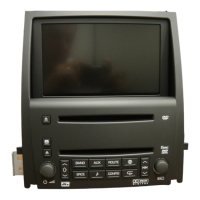



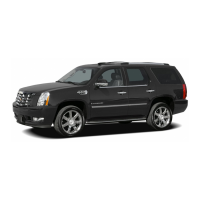
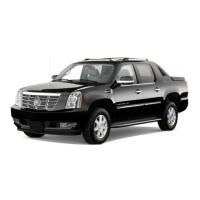
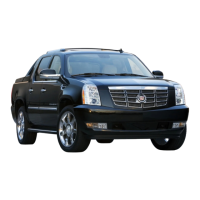

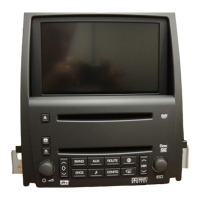



